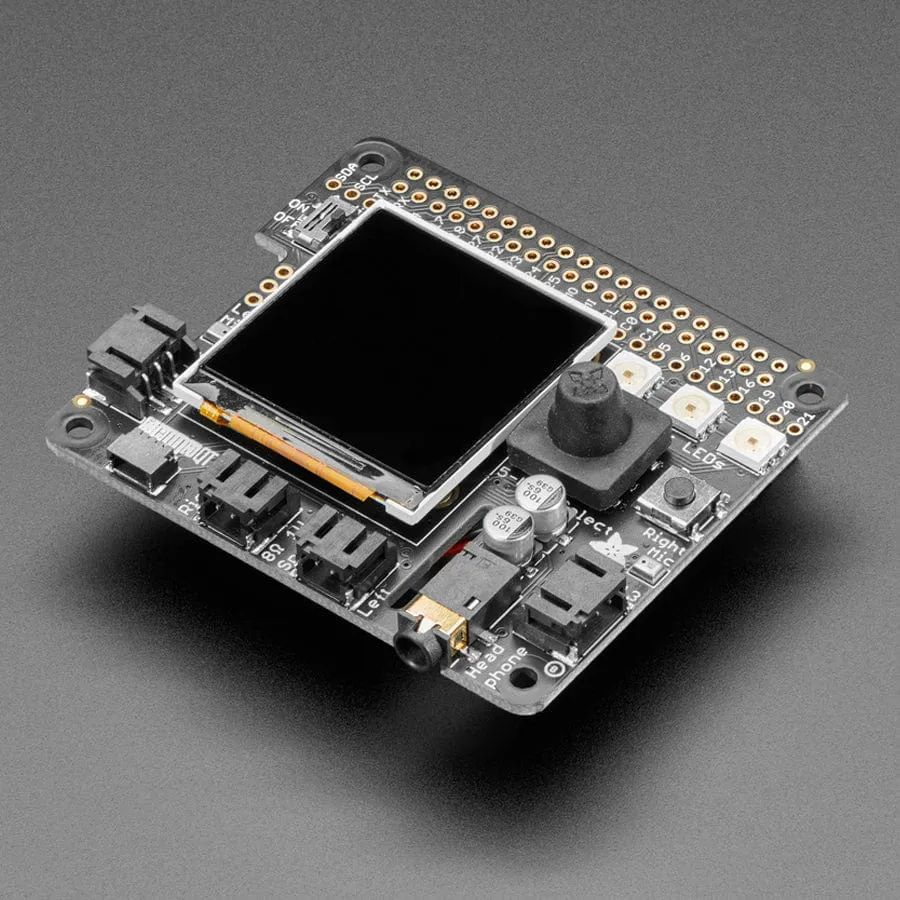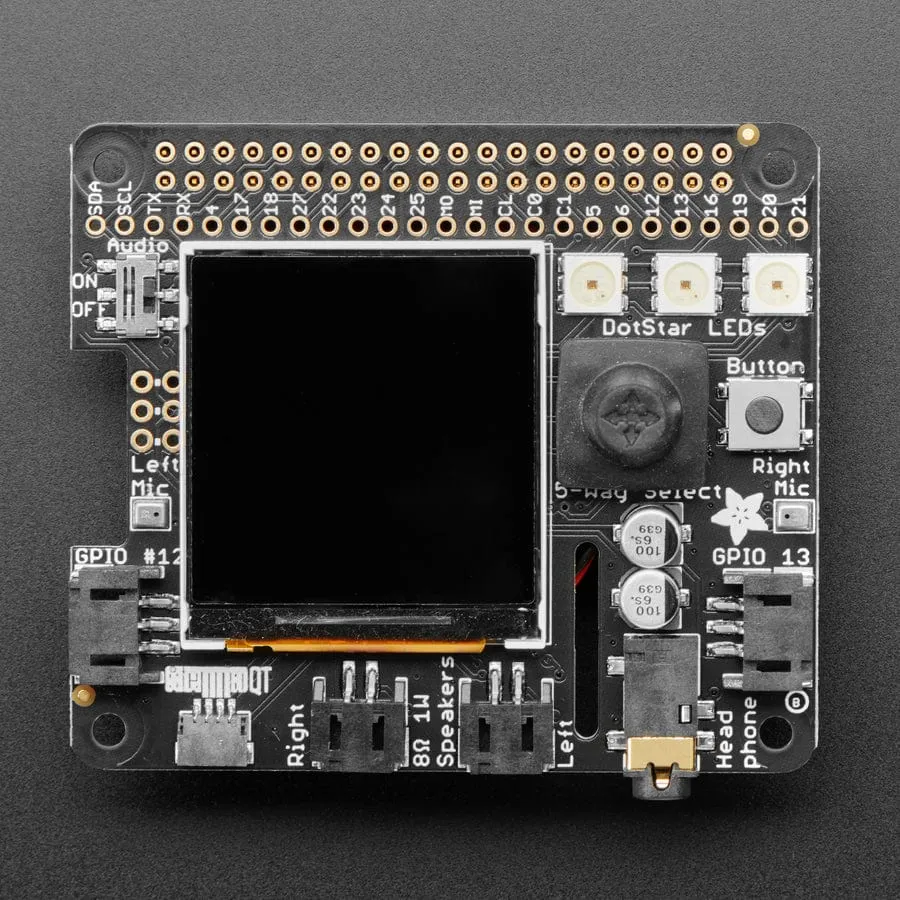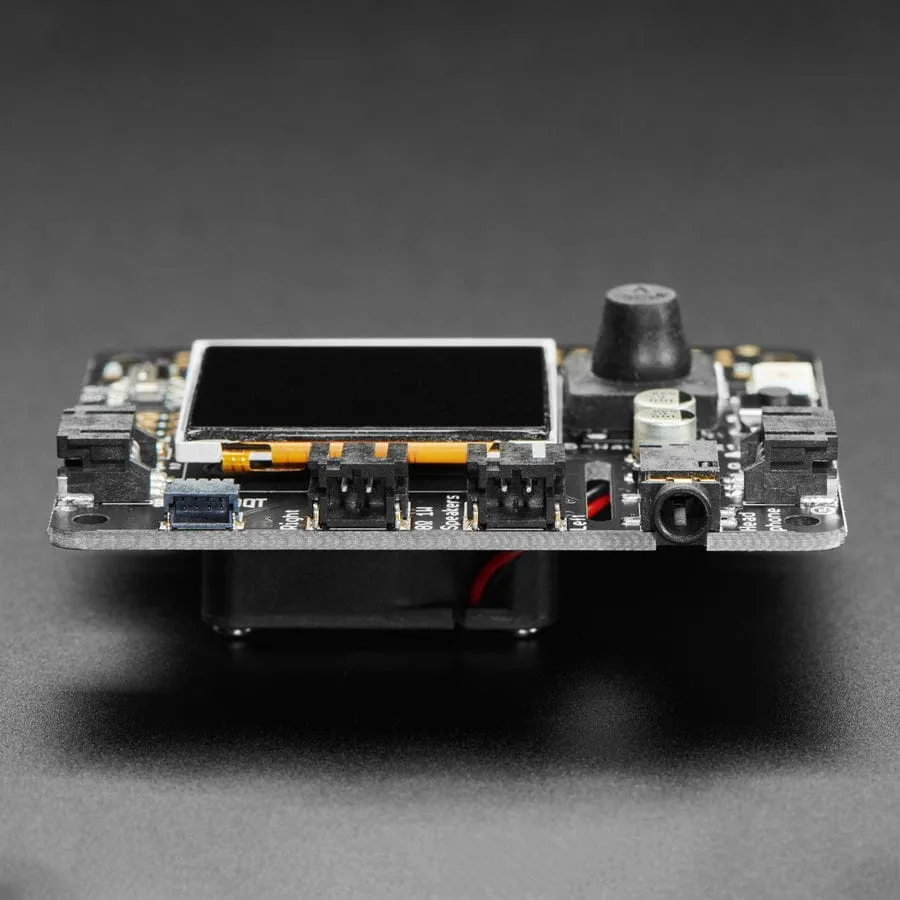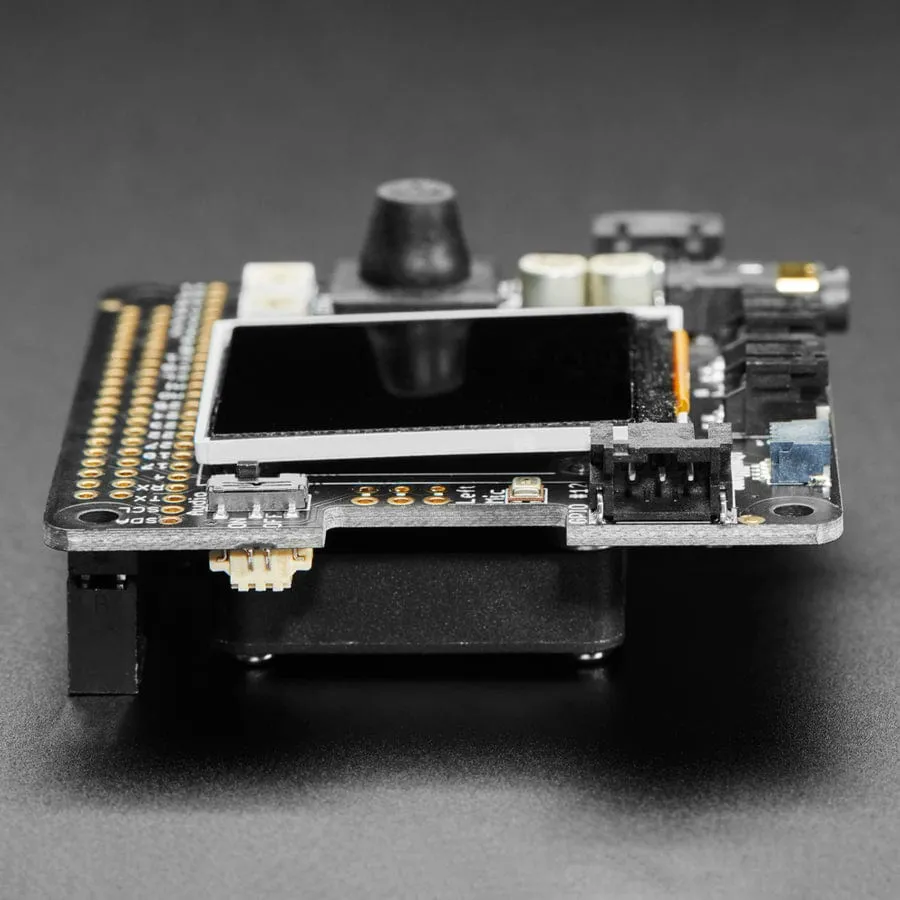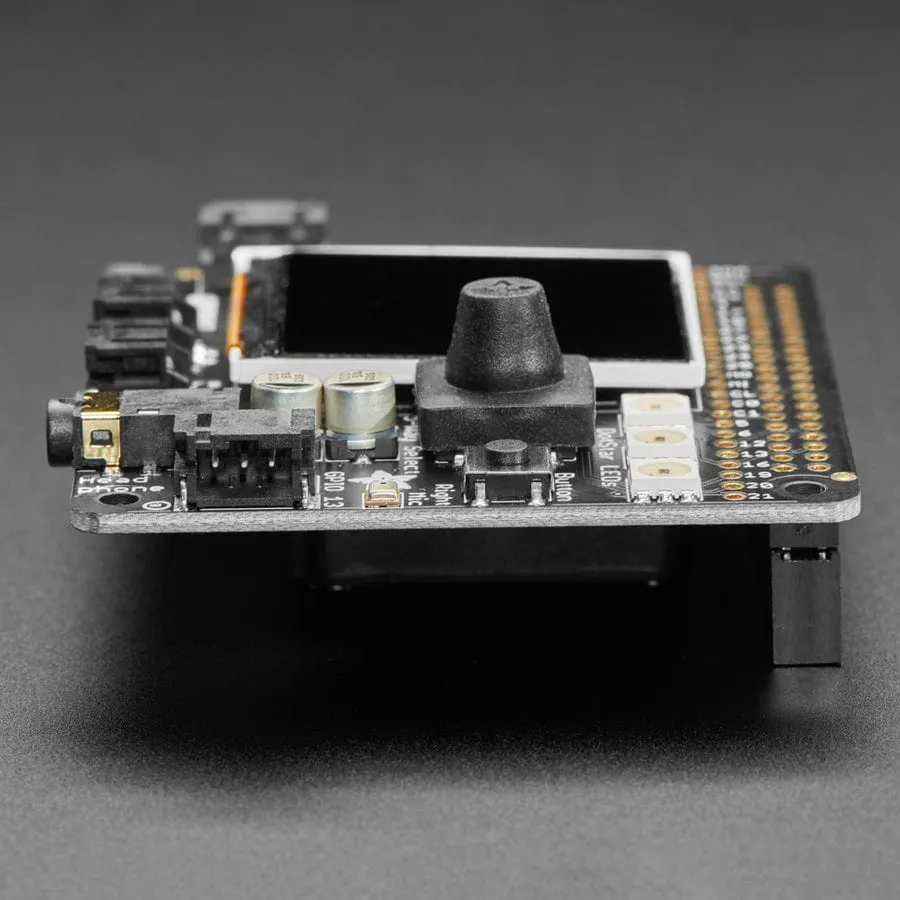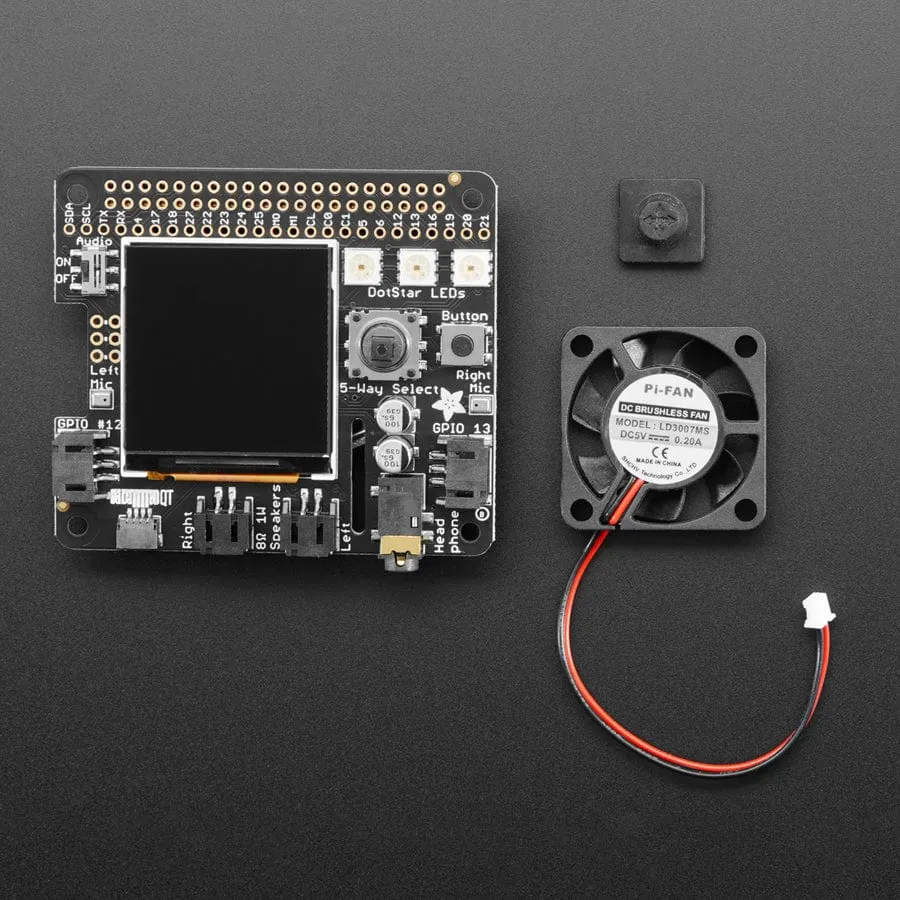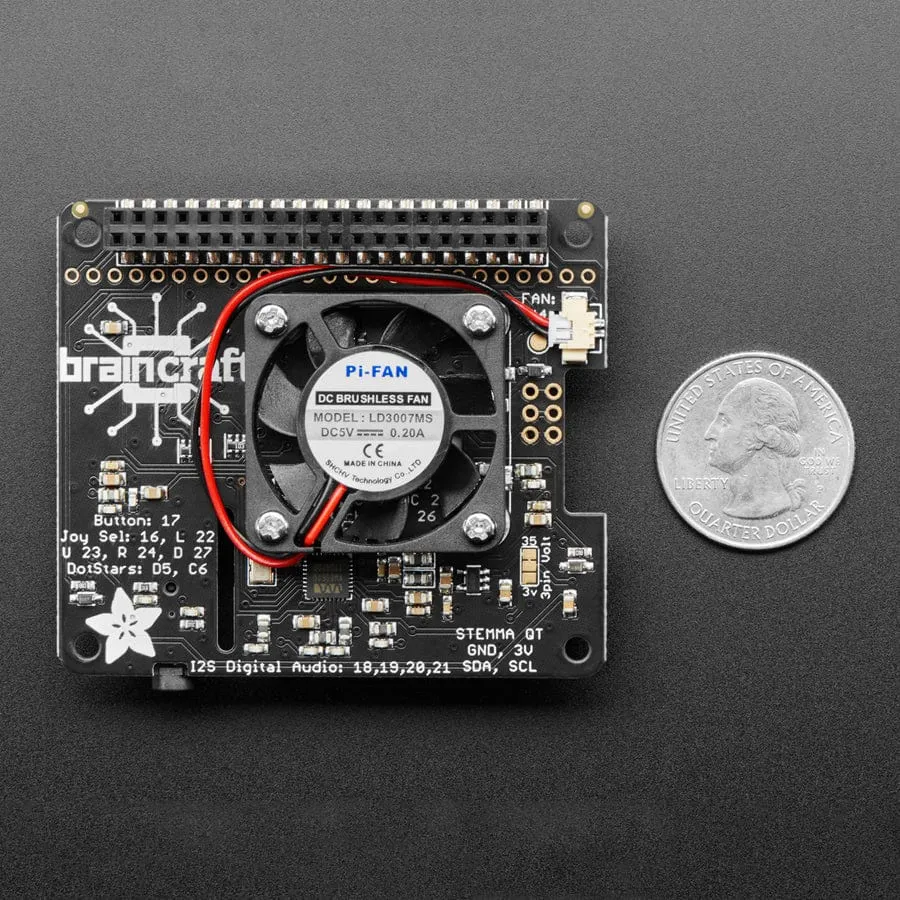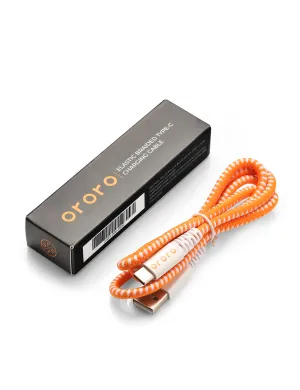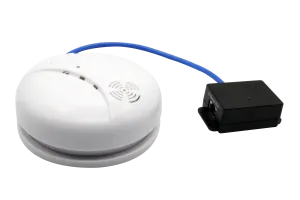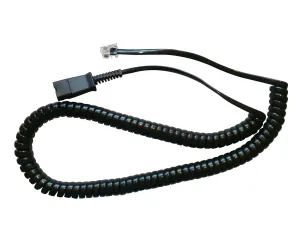The idea behind the BrainCraft HAT is that you’d be able to “craft brains” for Machine Learning on the EDGE, with Microcontrollers & Microcomputers. On ASK AN ENGINEER, our founder & engineer chatted with Pete Warden, the technical lead of the mobile, embedded TensorFlow Group on Google’s Brain team about what would be ideal for a board like this.
And here’s what we designed! The BrainCraft HAT has a 240 x 240 TFT IPS display for inference output, slots for camera connector cable for imaging projects, a 5-way joystick, button for UI input, left and right microphones, stereo headphone out, stereo 1 W speaker out, three RGB DotStar LEDs, two 3 pin on PWM pins so they can drive or , and Grove/STEMMA/Qwiic I2C port. This will let people build a wide range of audio/video AI projects while also allowing easy plug-ins of sensors and robotics!
A controllable mini fan attaches to the bottom and can be used to keep your Raspberry Pi 4 cool (untested for size with Pi 5) while doing intense AI inference calculations. Most importantly, there’s an On/Off switch that will completely disable the audio codec, so that when it's off there’s no way it's listening to you.
Features
- 1.54" IPS TFT display with 240 x 240 resolution that can show text or video
- Stereo speaker ports for audio playback - either text-to-speech, alerts or for creating a voice assistant.
- Stereo headphones are out for audio playback through a stereo system, headphones, or powered speakers.
- Stereo microphone input - perfect for making your very own smart home assistants
- Two 3-pin JST STEMMA connectors that can be used to , a relay, or even some !
- STEMMA QT plug-and-play I2C port can be used with any of our 50 I2C STEMMA QT boards or can be used to connect to Grove I2C devices with an adapter cable.
- 5-Way Joystick Button for user interface and control.
- Three RGB DotStar LEDs for colourful LED feedback.
The STEMMA QT port means you can attach heat image sensors like the or . Heat-sensitive cameras can be used as a person detector, even in the dark! An external accelerometer can be attached for gesture or vibration sensing such as machinery/industrial predictive maintenance projects




